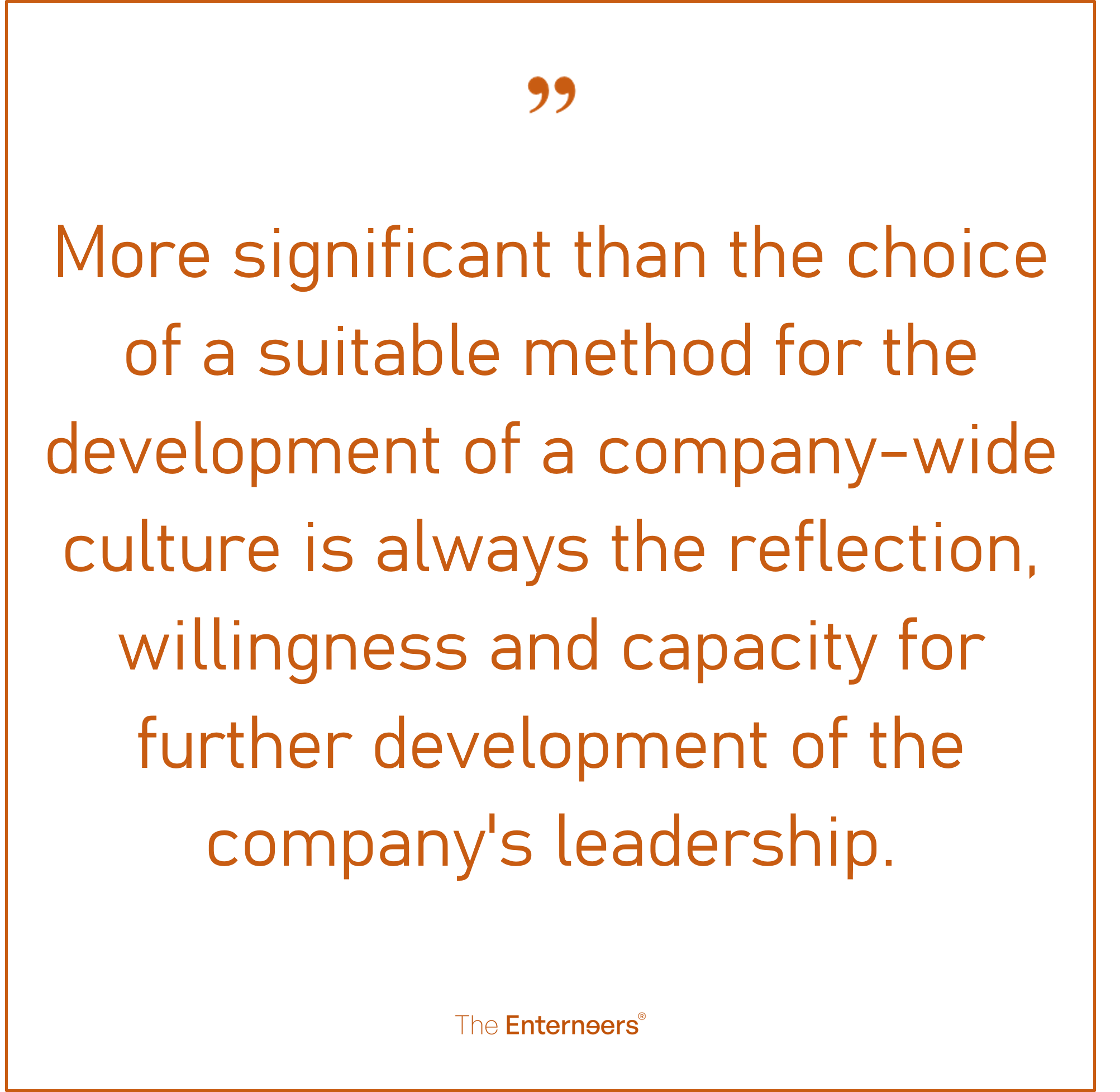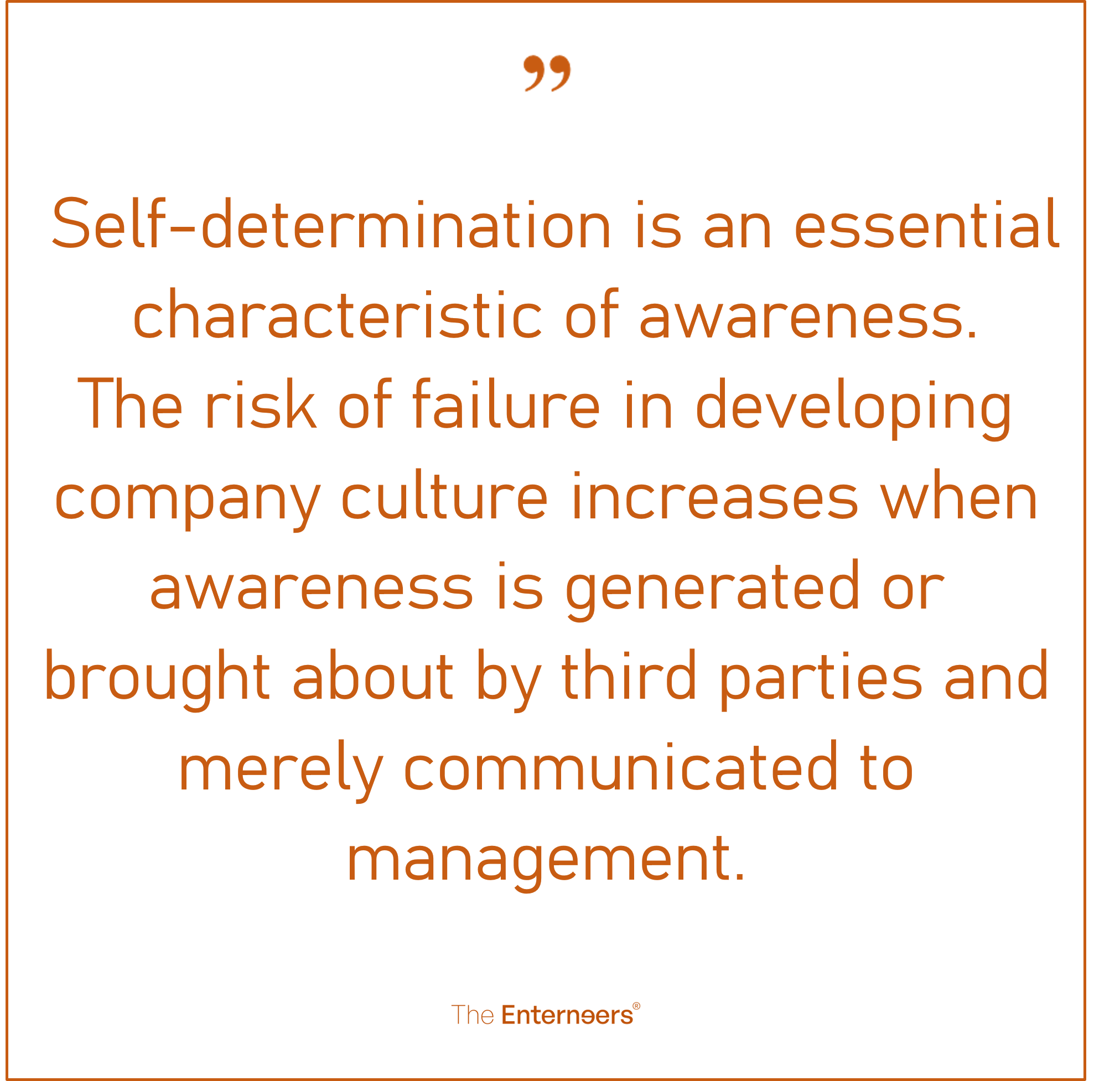Developing an individual corporate culture does not necessarily require intensive study or an infinite number of methods. There are countless professional articles available that describe different methods and experiences.
One cultural researcher is Geert Hofstede, who describes organisational culture as a collective mental programming that distinguishes the members of one group or category from those of others. He has established a model with four categories: ‘Values’, ‘Rituals’, ‘Heroes’ and ‘Symbols’. [More about this model]
Another pioneer in the field of organisational culture is Edgar H. Schein. He defines organisational culture as the sum of all common and taken-for-granted assumptions that a group has learned over the course of its history. His three-level model – ‘Basic Assumptions’, ‘Values & Norms’ and ‘Artefacts’ – serves as the starting point for later models of culture. [More about this model]
Also well-known for describing corporate culture is Edward T. Hall’s ‘iceberg model’. This iceberg-shaped model illustrates the connection between visible, easily accessible cultural characteristics and the hidden, invisible parts of cultural behaviour. [More about this model]
McKinsey consultants Tom Peters and Robert Waterman developed the “7S model”, in which three hard and four soft factors are described as pillars of success, and the interdependencies within corporate culture are shown. [More about this model]

Methodologically speaking, there is thus something to suit every individual taste or situation. However, before applying or changing certain elements or approaches, the human aspects should be adjusted, first and foremost within the executive management itself. Although there is no patent recipe or commonly used blueprint for successful cultural development, the core elements of ‘awareness’, ‘courage’, ‘self-reflection’ and ‘action’ apply in almost any circumstance, method, or model for success.
Awareness
The path to awareness is paved with knowledge about the characteristics and significance of corporate culture as well as acceptance that the current form of any individual company’s culture has its weak points. Only those who understand how culture affects the people within a company and the consequences or changes that are associated with particular forms of cultural development can assess the situation in their own company. If management is also able to actively accept the potential for development, it will be able to tackle this a self-determined manner.

Courage
Courage is the lifeblood of every entrepreneur. Theoretically, there should be nothing else to add to this point. In practice, however, it is apparent that some entrepreneurs do not apply the same care and consistency to the topic of culture development as they do to making changes to an established product or their market image. This is probably because corporate culture is a topic that can relatively easily be moved to the back burner, but not one that can easily be simulated or calculated. It may therefore be considered a major unknown or uncertainty – and it is in constant competition with every other business process for attention and resources. This is exactly the point of the aspect of ‘COURAGE’, which is closely linked to a consistent risk consciousness.
It means having the courage to consciously adapt our own happily nurtured ways of thinking and behaving and remain authentic. The necessity of having the courage to consistently accept problematic ripple effects and interactions. In the end, it is also about having the courage to move forward with the times yourself, anticipating the future with an entrepreneurial mindset and paving the way for your organisation to get there successfully, even without being sure that you will always feel comfortable there yourself.
Self-Reflection
People all differ when it comes to their character, origin, upbringing, education, life experiences, preferences and personal development goals. All these aspects determine how individuals think and act. When it comes to the issue of developing an appropriate or desired form of corporate culture, contradictions or disagreement between those carrying out this task and the corporate ideal are not uncommon. The most important element for successfully resolving this debate is self-reflection.
Although the term is ‘self-reflection’, enlisting appropriate third parties can be helpful. These may be life partners, people from your circle of friends and family, or trusted business partners. It is important that any such discussions be kept completely confidential and that open and honest feedback is expected.
Honest self-reflection can reveal that some of our own traits or behaviours are in conflict with specific elements of the company culture. For example, a person who places great value on tradition, performance and success will generally be strongly in favour of action-oriented planning and development and less focussed on team-oriented issues. Recognising and reflecting on constellations like these is an important step that should be taken before deciding on and implementing appropriate development measures.
Action
Regardless of whether the actions taken consist of personal measures, those of the management team or from within the workforce, they must always be planned. It is partly a matter of identifying and evaluating important interdependencies and interactions associated with the implementation of these actions. As with any task list or roadmap, the usual minimum requirements for these actions should also be described. In addition, for most actions, concurrent change management will probably be useful – and may even be an absolute necessity.
Public action should be integrated into the company's overall plan, because this also takes up resources, attention and energy. In addition, equivalent action planning promotes equivalent implementation and reduces the risk that culture development activities will be constantly pushed to the side in favour of business-related activities.

Personal actions should be itemized on a priority or to-do list, just like other strategic tasks. It also makes sense to share these personal tasks or goals with trusted people in your private life so that there is an opportunity for regular follow-up and feedback. Caution is advised, however, with any action that would require such a major change to your own patterns of thinking and behaviour that you risk a loss of authenticity or call your trustworthiness into question, or where your own discomfort might cause you to side-line your actual objective.
Within the framework of the principles described above, existing elements of today's culture can be evaluated, modified, or replaced and additional components adapted.[More about the elements of culture]


